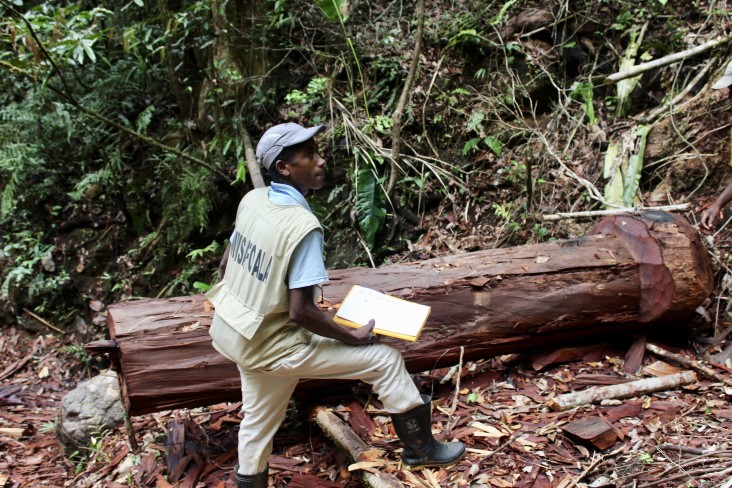
Pierre Sampilahy, Chief Patroller for the Mitsinjo community forestry group in northeastern Madagascar, looks at the large tree lying at his feet. “This one was cut for the market,” he says. “This is not wood that you use in the village.”
Madagascar is home to more than five percent of the world’s plant and animal species and is a global priority for biodiversity conservation. A recent report found that political instability, government mismanagement, a lack of forest operation controls and a lack of penalties on well-known traffickers led to effectively zero control over the management of precious timber resources in Madagascar between March 2010 and March 2015. During that time, at least 350,000 trees were illegally felled inside protected areas and at least 150,000 tons of logs were illegally exported to destinations including China, Malaysia and Mauritius. Rosewood and ebony species, highly valued in the furniture industry, are hardest hit by trade. Trees that took hundreds of years to grow to harvest size will not quickly grow back once cut. Shrinking forest cover means people do not have access to fresh water, wildlife and other forest resources they need for their lives and livelihoods.
Communities have been frustrated with outsiders taking resources from their forests, as well as the government authorities’ inaction to help them. Because they are not well connected to larger towns nor to the capital of Antananarivo, it is difficult for communities to make their voices heard.
That’s beginning to change. From 2013 to 2016, USAID supported a $2.25 million program that worked to empower communities, improve forest and protected area conservation, and give local people a voice at the national level. The program has enabled more accurate, immediate and informed natural resources monitoring and enforcement by working with a diverse array of stakeholders, from local villages and forest reserves to regional civil society organizations and national advocacy groups. Working in close collaboration with civil society and the government, a coalition of NGOs including World Wildlife Fund, Conservation International, Wildlife Conservation Society and TRAFFIC implemented the program.
Now, thanks to USAID and its partners, Pierre and his team of five community patrollers are better able to monitor their forests and protect them. With training in law enforcement monitoring, the patrollers survey their community forest regularly, collecting data on allowed community use of trees, illegal logging and changes to their forest. When they discover a violation, such as the recently-cut tree spotted by Pierre, they record the data, including a GPS point, and send a report to the government authorities. This coordination allows park managers to respond in a targeted and timely manner to changes and new threats in the area. Local communities are also now better connected to regional and national civil society advocates for forests and biodiversity. Those groups support local communities as well as elevating their concerns to regional and national level decision-makers.
Valencia Ranarivelo, Project Coordinator for World Wildlife Fund, said, “The program opened many public forums for local people that didn’t exist before and now there is increasing transparency. We are working towards a more equitable system for local people and the natural resources they rely upon. Now communities in forest areas where we work are more connected, more capable and feel less isolated than before.”







Comment
Make a general inquiry or suggest an improvement.